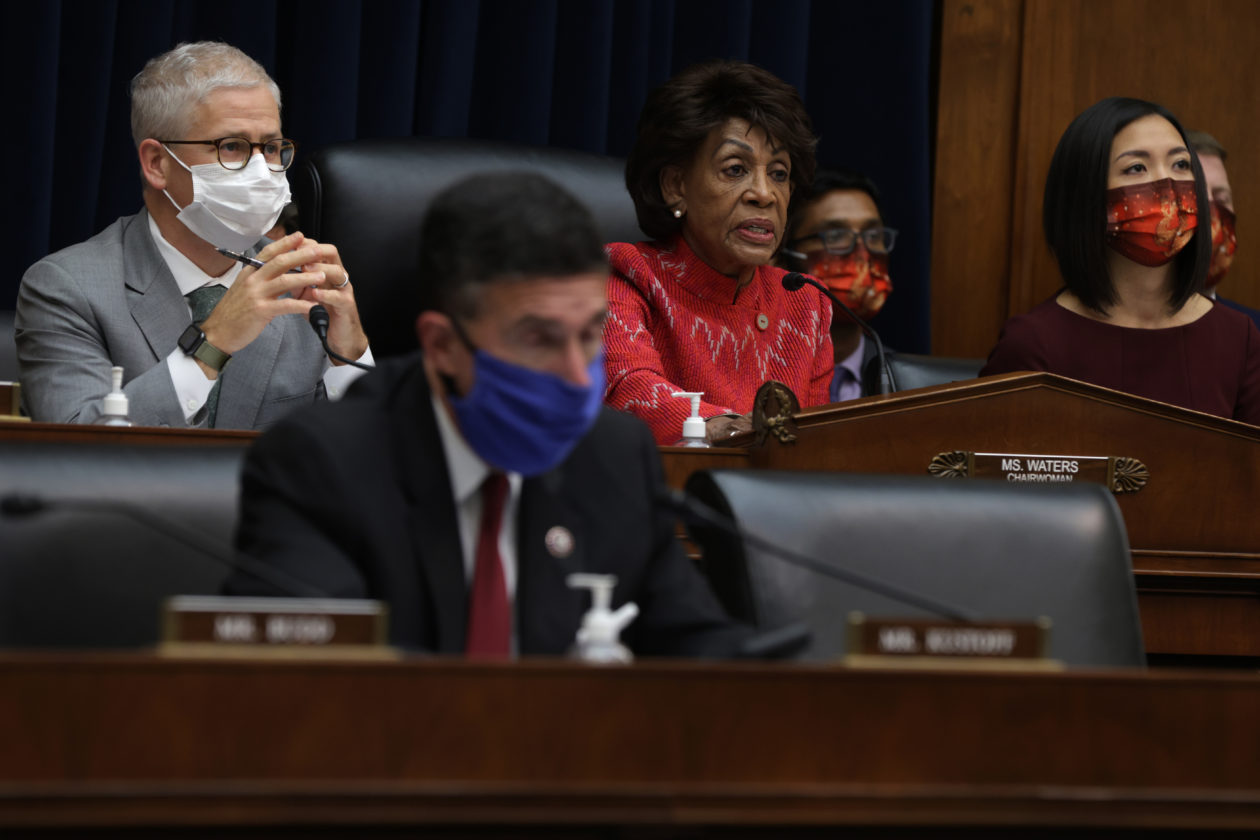In nearly five hours of testimony, chief executive officers of six large cryptocurrency-related companies appeared before the House Financial Services Committee. Led by U.S. Representative Maxine Waters, the House members sought to get a greater understanding of cryptocurrencies and debated the correct level of regulation for this market that, according to several members, has grown from US$500 billion a year ago, to US$3 trillion in October.
The CEOs who testified were:
- Jeremy Allaire of Circle, which issues USDC, the world’s second most popular stablecoin
- Sam Bankman-Fried of FTX, the third largest cryptocurrency exchange in the world for spot trading and the sixth largest for crypto derivatives
- Brian Brooks — the former U.S. Acting Comptroller of the Currency as well as former CEO of Binance U.S. — who is now chief executive of Bitfury Group, a full-service blockchain technology company
- Charles Cascarilla of Paxos Trust Company, a regulated blockchain service company
- Denelle Dixon of Stellar Development Foundation, which operates a decentralized exchange for crypto
- Alesia Haas of Coinbase Inc., the largest cryptocurrency exchange in the U.S.
The CEOs overall presented the case that the U.S. is lagging behind — by not recognizing stablecoins in the U.S. banking system, for example — and that several other G20 countries have come to understand and accept the innovations of cryptocurrencies. They emphasized that digital assets can address the global problem of the unbanked and underbanked, and may be particularly useful for speedier and lower cost remittances, which is often money sent from immigrant workers to their families back home. Most of all, they stressed that cumbersome and heavy regulation would stifle innovation and frustrate the masses.
The committee and the CEOs discussed stablecoins in depth, debating in particular why there is a need for a currency pegged to the dollar when the fiat currency of the land is the same dollar. Rather than challenging the dollar, the CEOs said, crypto in the form of stablecoins actually supports the dollar.
“People want dollars, that’s the hardest thing to get access to right now,” Cascarilla said. “The tokenized dollar is so important now, people don’t need a bank account to get access to the dollar.”
Allaire at another point said, “The dollar is winning the digital currency space race.” He compared stablecoins pegged to the U.S. dollar against the much smaller number pegged to the Chinese yuan. “It’s strategic for national security,” Allaire added.
Regulation, the lack of regulation, and contradictions in regulation were a common theme of the day. Differences between committee members were most noticeable on these points as the Republican members described the risks of overregulation while Democrats pointed out contradictions and gaps in regulations.
Bankman-Fried was asked several times by Republican members to describe how many regulatory bodies FTX has registered with and he described dozens worldwide, as well as pointing out that aside from registering with the Commodity Futures Trading Commission, FTX also is registered in many of the 50 U.S. states.
Then Democratic Congresswoman Cindy Axne pointed out that while FTX and its recent acquisition, Ledger, were registered with the CFTC, Bitcoin and Ether are not. “Bitcoin has almost a trillion invested in it.” But is not registered with the CFTC because the commission has oversight of derivatives but not spot trading.
Bankman-Fried agreed that this was a gap in oversight, although he also said customers get full market data without charge.
Haas added that Coinbase provides full market data to its customers.
Rashida Tlaib, a Democrat, brought up the energy costs of cryptomining, describing how mining is migrating away from China, where nearly all of Bitcoin mining took place, to states like Montana, where idled coal plants are now being fired up to serve the energy these complex computer calculations demand. Tlaib asked Dixon, of Stellar, whether the governments should take a more active role in reducing the crypto industry’s energy consumption and carbon emissions.
Dixon defended her own coin, Stellar’s XLM — currently the 25th largest cryptocurrency by its US$7.5 billion market cap — as having low energy requirements.
“Not every consensus application is proof of work, proof of stake,” she said, adding that “it would be good to continue that conversation with you.”
The conversation between the U.S. Congress and the crypto industry will continue next week, when the Senate Banking, Housing and Urban Affairs Committee will hold a hearing on stablecoins Dec. 14. The full witness list has not been released.





